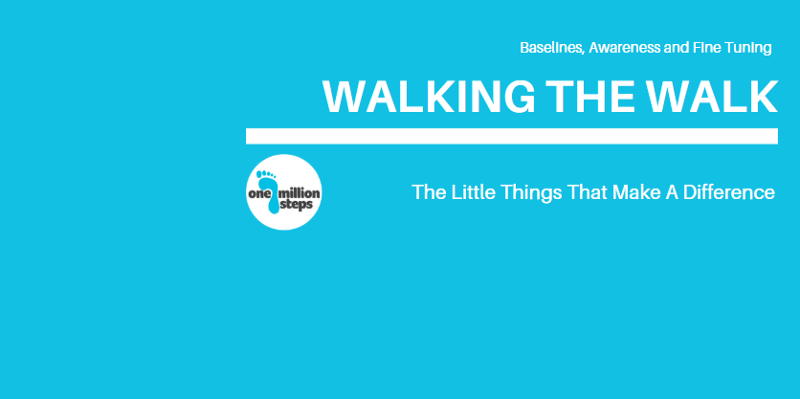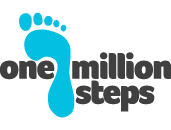
How to walk with the correct posture Part 1
This is a fine-tuning exercise
Walking. For many of us, it’s just a repeated action that we do daily.
And just like some repeated actions, we just “get on with it”
You walk to the car, bus stop, you walk around the supermarket or shopping centre, in the office, at home … it just happens.
And when things just happen. Every day. For years. It becomes so natural that we stop giving the action any attention.
Let’s take brushing your teeth.
You are tired and didn’t get enough sleep, you are thinking of that coffee, you are stressing about that first meeting, or you need to the getting breakfast going for the family.
It’s natural. Toothpaste on the brush, brush in mouth, randomly scrub away for a bit. Spit, Gargle and you’re off!
In fact, sometimes, it just seems like such a chore, you just want to get it over with and get to the next task.
And that is why your hygenist or dentist often reminds us how to brush your teeth. And they will tell you to focus on THE BRUSHING; spend the time, get the right technique and reach the right areas.
Otherwise, in time … that’s right … a slow degeneration and decay.
In a similar way, walking is the same. In fact, like brushing your teeth, we are taught to walk at an early age. And then no one ever really revisits the way we walk.
But sometime’s we do have a suspicion that something may not be right.
Backache. Neckache. Knees that hurt.
Now that you are have begun to make walking a daily habit, it’s time to re-visit and have a look at how you walk and if you are as close to possible as having the right style, stance and posture.
From now on, when you go for a walk. Look at other walkers. Pay close attention to them. You will see a few styles.
The slow gentle walker; deep in thought. Arms and hands relaxed.
The stressed, rushed walker; leaning forward as if fighting a mighty headwind. Walking almost furiously
The walker who looks like they have the weight of the world on them; neck down, haunched back, eyes looking just beyond their feet. The walker YOU feel ready to shout “LOOK OUT!, there’s a big drop coming up fast!”
And then you see the confident walker. Walking or jogging, looking confident, with the head relaxed, upright, eyes looking ahead and yet aware of what is coming up in front of them. Gliding along.
Have you ever noticed yourself suddenly, subconsciously, but naturally readjusting your stance and posture? I know I do when I see a walker like that. It’s as if something is triggered in the mind that says “pay attention to what you are doing.”
And that is the critical thing. We sometimes slide into a walking stance that we are used to. And it may not be the best one.
And just the one look at that other walker, it’s almost as if the brain is given a quick refresher or reminder and we immediately go “Oops, back into it!”
That sudden refresher, that almost sudden awakeness; it’s because we have become aware.
YOUR ACTION: So, for this exercise, we want you to start being aware of how you walk.
It does matter. Because just like not brushing your teeth properly, there are some simple things you can do to get the most out of your walks.
Walking with the right technique and good posture can help:
– keep your bones and joints aligned properly
– decrease wear and tear on your joints, muscles, and ligaments
– prevent back, hip, neck, and leg pain
– reduce muscles aches and fatigue
– reduce the risk of injuries
– improve your balance and stability. Source
There are so many amazing resources out there, but we think the one below is just perfect.
It’s so clearly written we would be lying if we thought we could do better.
BUT we are going to split it into two. Upper Body and Lower Body
For today, we want you to focus on your Upper Body:
- Walking Posture
- Arm Motion
Walking Posture
Posture is the first step for walking comfort and energy. Good walking posture allows you to take full breaths, engage your core muscles, and use your leg and buttock muscles for a natural walking stride. It is also an antidote to the hunching and slouching many people do at work and when using a mobile phone.
Bad walking posture can contribute to aches and pains after walking, while great walking posture can relieve them. At the start of every walk, take a few seconds to set your walking posture.
Great Walking Posture
Stand up straight with your feet together a comfortable space apart. Your toes should be pointed forward, but a slight angle is acceptable.
Imagine a string attached to the top of your head. Feel it lift you up from your hips so you are tall and straight. Do not lean forward or backward.
Don’t arch your back.
Suck in your stomach slightly, engaging your core muscles. This will help maintain proper posture while walking.
Maintain a neutral pelvis, not tipping your hips forward or back, to allow for your spine’s natural curves.
Focus your eyes 10 to 20 feet ahead of you. Your head will follow where your eyes are looking.
Keep your chin parallel to the ground. You probably already corrected this by looking ahead of you, but take a moment to check that your chin isn’t tilted either up or down. Walking with your head down (say, when checking your phone) creates tension in your upper body and puts a strain on your neck, as does craning your neck backward. Plus, you miss the beautiful, energizing scenery around you.
Shrug your shoulders and let them relax, with your shoulders slightly back. This will help relieve the tension so many people carry in our shoulders. It will also set your position for using arm motion. Now you have the right posture to get started walking.
Arm Motion
Purposeful arm motion can lend power to your walking, burning 5% to 10% more calories and acting as a balance to your leg motion. It is common to speed up when you add arm motion.
Many poor examples of “speedwalking” arm motion are seen in popular culture, with arms pumped high in the air, crossing the body, or extending out. That kind of arm motion does not help you.
Steps for Proper Walking Arm Motion
Bend your elbows 90 degrees.
Partially close your hands, but do not clench them. Clenching your fists can raise your blood pressure.1
With each step, the arm opposite your forward foot comes straight forward, not diagonally.
As the forward foot goes back, the opposite arm comes straight back.
Keep your elbows close to your body; don’t chicken wing (flapping your elbows out).
Your forward hand should not cross the center point of your body.
When coming forward, your hand should be kept low, no higher than your breastbone.
If you find adding arm motion tiring, do it for 5 to 10 minutes at a time and then let your arms relax and swing naturally at your sides.
Source: 4 Steps to a Great walking Technique
Just remember, look out for that smart well-postured walker, look what they are doing. Take the time to bring your awareness and focus to your walking style
STOP. STAND STILL. AND START AGAIN if it helps.
And practise
Happy Stepping!
To find out more about the Million Steps Challenge and how we can help you, your business or charity, please visit https://millionsteps.com
Or Register your organisation interest: Million Steps CoVid-19 Package here
